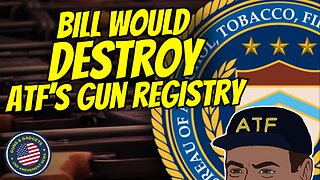Premium Only Content
![Space Shuttle Columbia Disaster Video [With Real Video] | Mayday: Air Disaster (4K)](https://1a-1791.com/video/s8/1/x/o/P/m/xoPmo.qR4e-small-Space-Shuttle-Columbia-Disa.jpg)
Space Shuttle Columbia Disaster Video [With Real Video] | Mayday: Air Disaster (4K)
Support Channel → /
technoblogvideos
Space Shuttle Columbia Disaster Video [With Real Video] | Mayday: Air Disaster (4K)
The Space Shuttle Challenger disaster was a fatal accident in the United States' space program that occurred on January 28, 1986, when the Space Shuttle Challenger (OV-099) broke apart 73 seconds into its flight, killing all seven crew members aboard. The mission carried the designation STS-51-L and was the tenth flight for the Challenger orbiter.
The spacecraft disintegrated over the Atlantic Ocean, off the coast of Cape Canaveral, Florida, at 11:39 a.m. EST (16:39 UTC). The disaster began after a joint in the Space Shuttle's right solid rocket booster (SRB) failed at liftoff. The failure was caused by the failure of O-ring seals used in the joint, in part because of the unusually cold temperatures at the time of launch. The seals' failure caused a breach in the SRB joint, which allowed pressurized burning gas from within the solid rocket motor to reach the outside and impinge upon the adjacent SRB's aft field joint attachment hardware and external fuel tank. This led to the separation of the right-hand SRB's aft field joint attachment and the structural failure of the external tank. Following the explosion, the orbiter was broken up by aerodynamic forces.
The crew compartment and many other vehicle fragments were recovered from the ocean floor after a three-month search and recovery operation. The exact timing of the death of the crew is unknown; several crew members are known to have survived the initial breakup of the spacecraft. By design, the orbiter has no escape system, and the impact of the crew compartment at terminal velocity with the ocean surface was too violent to be survivable.
The disaster resulted in a 32-month hiatus in the Space Shuttle program and the formation of the Rogers Commission, a special commission appointed by United States President Ronald Reagan to investigate the accident. The Rogers Commission found that issues with NASA's organizational culture and decision-making processes had been key contributing factors to the accident. Test data from as early as 1977 had revealed a potentially catastrophic flaw in the SRBss O-rings, but this was not addressed or corrected by NASA or Morton Thiokol. NASA managers also disregarded warnings from engineers about the dangers of launching in cold temperatures and did not report these technical concerns to their superiors.
Music(Ross Bugden):
-
 LIVE
LIVE
Graham Allen
1 hour agoHelicopter CRASHES into plane over DC! + RFK Hearing Gets INTENSE And META To Pay Trump $25M!
5,911 watching -
 LIVE
LIVE
Wendy Bell Radio
4 hours agoBig Pharma B*tches
9,999 watching -
 UPCOMING
UPCOMING
Vigilant News Network
15 hours agoRFK Jr. Stuns Critics: Will He Be Confirmed? | The Daily Dose
3.93K2 -
 LIVE
LIVE
NEWSMAX
1 month agoNEWSMAX2 LIVE | Real News for Real People
5,423 watching -
 1:16:32
1:16:32
Game On!
14 hours ago $1.14 earnedBelichick DEMANDS NFL Change Super Bowl Trophy Name to HONOR Tom Brady
14.4K2 -
 13:01
13:01
MichaelBisping
16 hours agoBISPING meets SHARA BULLET - 'One Eye Brothers!' | UFC Saudi Arabia (INTERVIEW)
10.9K1 -
 9:46
9:46
Guns & Gadgets 2nd Amendment News
1 day agoNew Bill Would Destroy ATF's Gun Registry!
8.93K28 -
 8:59
8:59
IsaacButterfield
1 day ago $0.87 earnedThis Needs To Be Stopped
11.2K8 -
 11:48
11:48
Alabama Arsenal
1 day ago $0.52 earnedGenesis Gen 12 Deep Dive | Unleash The Power
25.5K4 -
 38:57
38:57
PMG
17 hours ago $0.76 earnedHannah Faulkner and Brandon Tatum | BREAKING THE CHAINS: Exposing the Left’s Manipulation
22.7K3